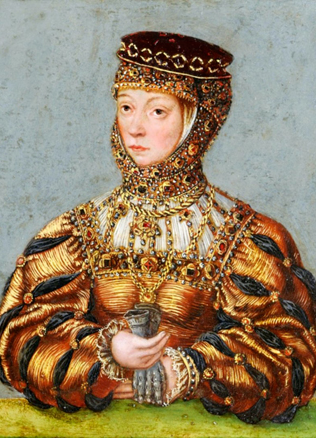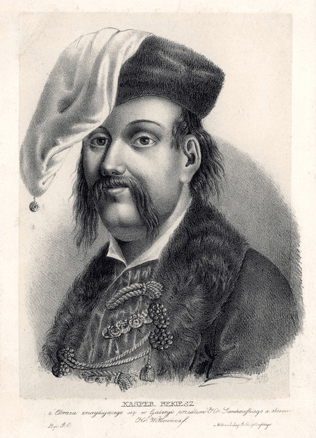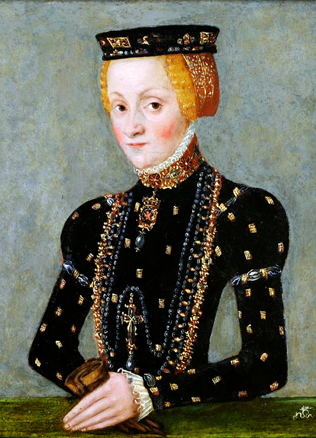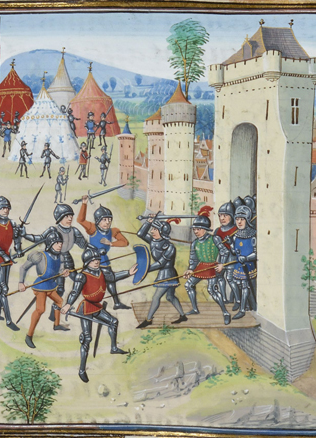The Year 1219: the Reign of Dukes
Changes in the internal policy of Lithuania, relations between the most influential groups of the nobility of the country determined directly the intensification and weakening of pillages of the Lithuanian military retinue, which, at the beginning of the 13th century more and more often acquired features of the chosen political activity, as well as a change in the attack objects and political partners. It was under these circumstances that bore out a monarchical power that was concentrated in the hands of the Dukes of the land of Lithuania.
Names from the past. Co-rulers of ancient Lithuania
Do You Know?
The 1219 Peace Treaty between the Dukes of Lithuanian lands and the Duchess of Volhynia, who took care of two juvenile sons Daniel and Vasilka, reveals collective power of the hierarchical nobility, and the Lithuanian Dukes: “At God’s command the Lithuanian Dukes were sent to the Grand Duchess Romanova and Daniel and Vasilka presenting them with peace. The names of the Lithuanian Dukes are as follows: these eldest are Živinbudas, Daujotas, Dausprungas, his brother Mindaugas, Daujotas’ brother Viligaila; and Samogitian Dukes are Gerdvilas, Vykintas; and the Ruškaičiai Dukes are Kintibutas, Vambutas, Butautas, Vyžeikis and his son Višlius; Kintenis, Plikienė; and Bulevičiai – Vismantas, he was killed by that Mindaugas who married his wife, and he also killed his brothers: Gedvilas and Sprudeikis; and the names of Deltuva Dukes are Judeikis, Pukeikis, Bikšys, Lygeikis. All these Dukes presented the Duke Daniel and Vasilka with peace, and the land was quiet”.
Five eldest Dukes of the Lithuanian land from two or three families (Živinbudas, brothers Daujotas and Viligaila, Dausprungas and Mindaugas) represented the supreme power of Lithuanians. “The Dukes of the “lower stages” most probably obeyed this oder. On the basis of the points of the treaty, it can be thought that the lower Dukes were mentioned according to their social importance or influence. They are Dukes of the Samogitians, the Ruškaičiai from Upytė land, the Bulevičiai (Bulionys) from Šiauliai land and the Dukes of Deltuva land. This hierarchic group of Lithuanian dukes already managed to come to agreement on the affairs of the internal and external policy, to represent all or the majority of the Lithuanian lands beyond the borders of the ethnos. Živinbudas seemed to have the greatest authority, he was first among the equals because in 1219, the participants in the Agreement, one should think, allowed him to be the first to confirm peace and take the oath.
At the sources of the state
The precursors of the top Lithuanian society who prior to that had gone through the stages of growing rich and social differentiation, had isolated themselves socially and materially from their tribesmen of lower origin, who are already subordinate, ruled separate Lithuanian lands by themselves.
The Dukes of the 1219 treaty inherited the highest position in society rather than earned or achieved it by themselves.
Their place in the hierarchy and society was guaranteed by the birth, military force (retinue), the land ownership, well-judged relationship and the accumulated assets. Proximity of Lithuanian dialects and customs made unification easier. The Lithuanian nobility united for marauding predatory raids in the neighbouring lands: in Livonia, Russia and Poland. The Lithuanian Dukes could not ignore joint agreements, they sought to achieve that merchants should carry their goods across their lands and waters, that custom duties and levies should be paid. Though we lack exact data, it can be thought that the Dukes of Lithuanian lands regularly took the taxes paid by the inhabitants of the Lithuanian lands (pasėdžiai (tithing in kind), feasts, gifts) for themselves. The Lithuanian system of the names of these taxes that has survived – pasėdis, viešė/vaišės, mezliava, kiemas – testifies to the fact that pre-state taxes paid by the inhabitants to the land nobility all over the country were similar and united the Lithuanians. A growing threat of the Christian German colony in Riga beyond the borders of Lithuania urged the Lithuanians naturally to take joint retaliatory measures. The Lithuanian nobility controlled spiritual life of their tribesmen and solved confessional belonging of their subordinates.
Collective power of the Dukes with the authoritative senior did not provide for the position of the monarch yet, but it testified to the fact that Lithuanian lands, like their nobility, have reached a high level of unity and integrity, that the Grand Duke’s power was already possible.
Sacrificed for the sake of kingdom
Mindaugas, one of the participants in the agreement, one of the senior dukes, a man that, if we were t believe contemporary testimonies, did not lack charisma, took most advantage of that. Collective governing of Lithuanian lands started to fall apart when Mindaugas became the senior of the family, and the army of the Brothers of the Sword and Christian pilgrims was defeated in the Battle of Saulė (Šiauliai) on 22 September 1236. After the death of the elder brother Dausprungas, approximately in the mid-1330s, a part of the Lithuanian land went into the ownership of his minor sons Tautvilas, Gedvydas and his daughter. While the Dausprungas children were minors (around 1235–1248), Mindaugas ruled all Lithuanian lands alone. He developed the intensive military and political activity beyond the borders of Lithuania. Mindaugas’ growing authority, his influence and concentrated force strengthened his power not only in Lithuania in a narrow sense but also in other ethnic Lithuanian lands.
Soon dangerous rivals to Mindaugas’ absolute rule appeared among his relatives.
The Chrildren of Dausprungas reached adulthood and were not satisfied with the situation in the estates that belonged to them. They disobeyed their uncle and sought to get back the position assured by their birth: a quarrel broke out among the dukes of the land of Lithuania. It is not simple to reveal the motives of the behaviour of the participants in the quarrel but the course of the events testify to the fact that Mindaugas decided to establish his power all over Lithuania by military force and his nephews Tautvilas and Gedvydas, as well as their uncle – the Samogitian Duke Vykintas interfered with that. The Duke of Lithuania Mindaugas was the first to start an open war for supreme power in the Lithuanian lands. In 1248, he sent Tautvilas, Gedvydas and their uncle Vykintas to fight in Russia near Smolensk. He himself took possession of their lands, courts, castles – all movable and immovable property, sent his warriors to kill his nephews and their uncle.
Do You Know?
Mindaugas’ further activity in Lithuania destroyed the tradition of the rule of the Dukes and changed the structure of the nobility by force. Some dukes perished or fell in battles, others were forced to obey Mindaugas and become his barons. In this way the monarch’s power was created in Lithuania.
Literature: Lietuvos istorija, t. 3: XIII a. – 1385 m. Valstybės iškilimas tarp Rytų ir Vakarų, D. Baronas, A. Dubonis, R. Petrauskas. Vilnius, 2011.
Artūras Dubonis



